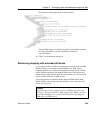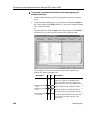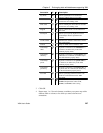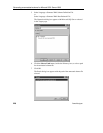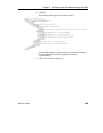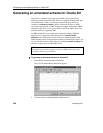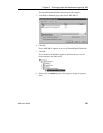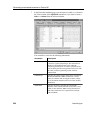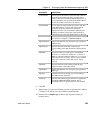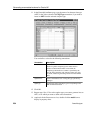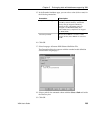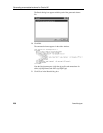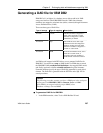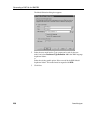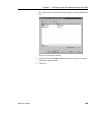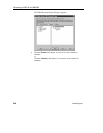
Chapter 5 Exchanging data with databases supporting XML
XSM User's Guide 233
Annotation Description
javaClassname Used to specify the name of a Java class that is derived
from the corresponding bean class, to ensure that an
object of this class is instantiated during bean access. If
a JavaClassname is not specified, Oracle XML DB will
instantiate an object of the bean class directly
maintainDOM If true, instances of this element are stored so that they
retain DOM fidelity on output. This implies that all
comments, processing instructions, namespace
declarations, and so on, are retained in addition to the
ordering of elements. If false, the output need not be
guaranteed to have the same DOM behavior as the input
maintainOrder If true, the collection is mapped to a VARRAY. If false,
the collection is mapped to a NESTED TABLE
SQLCollSchema Name of the database user owning the type specified by
SQLCollType
SQLCollType Specifies the name of the SQL collection type
corresponding to this XML element that has maxOccurs
> 1
SQLInline If true this element is stored inline as an embedded
attribute (or a collection if maxOccurs > 1). If false, a
REF (or collection of REFs if maxOccurs > 1) is stored.
This attribute will be forced to false in certain situations
(like cyclic references) where SQL will not support
inlining
SQLName Specifies the name of the attribute within the SQL
object that maps to this XML element
SQLSchema Name of the database user owning the type specified by
SQLType
SQLType Specifies the name of the SQL type corresponding to
this XML element declaration
tableProps Specifies the TABLE storage clause that is appended to
the default CREATE TABLE statement. This is
meaningful mainly for global and out-of-line elements
8 Click OK.
9 Repeat steps 6 to 8 for each element you want to generate into a table or
a column, or for which you want to define extra annotations.
10 Double-click a complex type symbol in the diagram to display its
property sheet.



